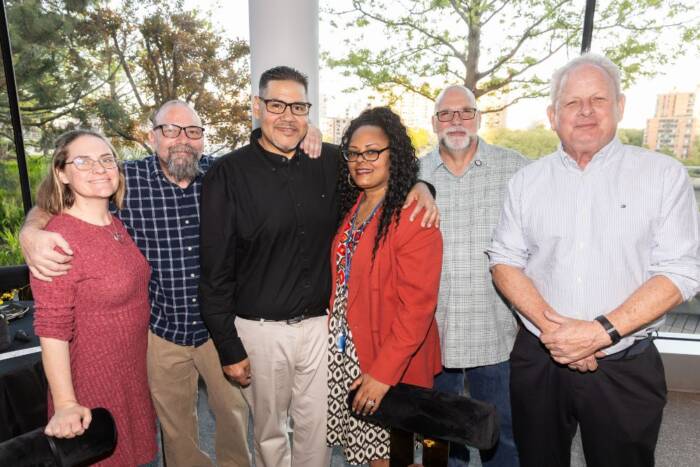Rockefeller neurobiology lab is awarded first-round BRAIN initiative grant
A proposal to develop a new way to remotely control brain cells from Sarah Stanley, a Research Associate in Rockefeller University’s Laboratory of Molecular Genetics(opens in new window), headed by Jeffrey M. Friedman, is among the first to receive funding from U.S. President Barack Obama’s BRAIN initiative. The project will make use of a technique called radiogenetics that combines the use of radio waves or magnetic fields with nanoparticles to turn neurons on or off.
The NIH is one of four federal agencies involved in the BRAIN (Brain Research through Advancing Innovative Neurotechnologies) initiative. Following in the ambitious footsteps of the Human Genome Project, the BRAIN initiative(opens in new window) seeks to create a dynamic map of the brain in action, a goal that requires the development of new technologies. The BRAIN initiative working group, which outlined the broad scope of the ambitious project, was co-chaired by Rockefeller’s Cori Bargmann, head of the Laboratory of Neural Circuits and Behavior(opens in new window).
Stanley’s grant, for $1.26 million over three years, is one of 58 projects to get BRAIN grants, the NIH announced. The NIH’s plan for its part of this national project, which has been pitched as “America’s next moonshot(opens in new window),” calls for $4.5 billion in federal funds over 12 years.

BRAIN control: The new technology uses radio waves to activate or silence cells remotely. The bright spots above represent cells with increased calcium after treatment with radio waves, a change that would allow neurons to fire.
The technology Stanley is developing would enable researchers to manipulate the activity of neurons, as well as other cell types, in freely moving animals in order to better understand what these cells do. Other techniques for controlling selected groups of neurons exist, but her new nanoparticle-based technique has a unique combination of features that may enable new types of experimentation. For instance, it would allow researchers to rapidly activate or silence neurons within a small area of the brain or dispersed across a larger region, including those in difficult-to-access locations. Stanley also plans to explore the potential this method has for use treating patients.
“Francis Collins, director of the NIH, has discussed the need for studying the circuitry of the brain, which is formed by interconnected neurons. Our remote-control technology may provide a tool with which researchers can ask new questions about the roles of complex circuits in regulating behavior,” Stanley says.


